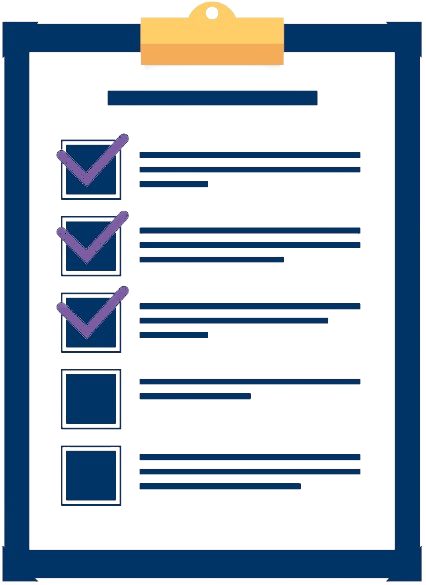Suggestions based on the Question and Answer that you are currently viewing
Assume that European countries impose a quota on goods imported from the United States and that the United States does not plan to retaliate. How could this affect the value of the euro? Explain. (LO2)
1. : Adopt Chris Robinson’s proposed changes and show more leniency to first-time offenders. It is a more cost-effective approach to the problem than the current policy, plus it stays close to your father’s original intent.
As a result of the Financial Reform Act of 2010, the Consumer Financial Protection Bureau was established and housed within the Federal Reserve. Explain the role of this bureau. (LO3)
A face milling operation is used to machine 6.0 mm from the top surface of a rectangular piece of aluminum 300 mm long by 125 mm wide in a single pass. The cutter follows a path that is centered over the workpiece. It has four teeth and is 150 mm in diameter. Cutting speed = 2.8 m/s, and chip load = 0.27 mm/tooth. Determine (a) the actual machining time to make the pass across the surface and (b) the maximum metal removal rate during cutting.
The financial statements of P&G are presented in Appendix 5B. The company’s complete annual report, including the notes to the financial statements, can be accessed at the book’s companion website, www. wiley.com/college/kieso. Instructions Refer to P&G’s financial statements and the accompanying notes to answer the following questions. (a) How does P&G value its inventories? Which inventory costing method does P&G use as a basis for reporting its inventories? (b) How does P&G report its inventories in the balance sheet? In the notes to its financial statements, what three descriptions are used to classify its inventories? (c) What costs does P&G include in Inventory and Cost of Products Sold? (d) What was P&G’s inventory turnover in 2011? What is its gross profit percentage? Evaluate P&G’s inventory turnover and its gross profit percentage.
Relevant information; recommendation Frank owns a caravan and loves to visit national parks with his family. However, the family only takes two one-week trips in the caravan each year. Frank’s wife would rather stay in motels than the caravan. She presented him with the following itemisation of the cost per trip, hoping that he will sell the caravan and use motels instead. Required (a) What are the relevant costs for deciding whether the family should go on one more camping trip this year? (b) What are the relevant costs for deciding whether Frank should sell the caravan? Assume the family will take the same vacations but stay in motels if the caravan is sold. (c) What factors other than costs might influence the decision to sell the caravan? List as many as you can. (d) Consider your own preferences for this problem. Do you expect Frank’s preferences to be the same as yours? How can you control for your biases and consider this problem from Frank’s point of view? (e) Frank asks you to help him decide what to do. Do you think he should sell the caravan? Why? (LO1, 2 and 3)
{Planning} Rick, who is single, has been offered a position as a city landscape consultant.The position pays $125,000 in cash wages.Assume Rick files single and is entitled to one personal exemption.Rick deducts the standard deduction instead of itemized deductions a.What is the amount of Rick’s after-tax compensation (ignore payroll taxes)?
Salazar Inc., a Colorado company, is relocating to a nearby town. It would like to trade its real property for some real property in the new location. While Salazar has found several prospective buyers for its real property and has also located several properties that are acceptable in the new location, it cannot find anyone willing to trade Salazar Inc. for its property in a like-kind exchange. Explain how a third-party intermediary could facilitate Salazar’s like-kind exchange.
In some instances, accounting principles require a departure from valuing inventories at cost alone. Determine the proper unit inventory price in the following cases. Cases 1 2 3 4 5 Cost $15.90 $16.10 $15.90 $15.90 $15.90 Sales price 14.80 19.20 15.20 10.40 17.80 Estimated cost to complete 1.50 1.90 1.65 .80 1.00 Estimated cost to sell .50 .70 .55 .40 .60
Draw a pair of diagrams like those in Figure 8.4. Illustrate what would happen if there were a rise in market demand and no rise in the costs of either the leader or the followers. Would there be an equal percentage increase in the output of both leader and followers?
Compare and contrast the tests for accruing income and those for accruing deductions for tax purposes.
Back Bay Insurance Company negotiated a callable swap involving fixed payments in exchange for floating payments. Assume that interest rates decline consistently up until the swap maturity date. Do you think Back Bay might terminate the swap prior to maturity? Explain. (LO2)
What is dressing, in reference to grinding wheels?
Jones Co. is in a technology-intensive industry. Recently, one of its competitors introduced a new product with technology that might render obsolete some of Jones’s inventory. The accounting staff wants to follow the appropriate authoritative literature in determining the accounting for this significant market event. Instructions Access the IFRS authoritative literature at the IASB website (http://eifrs.iasb.org/). (Click on the IFRS tab and then register for free eIFRS access if necessary.) When you have accessed the documents, you can use the search tool in your Internet browser to respond to the following questions. (Provide paragraph citations.) (a) Identify the authoritative literature addressing inventory pricing. (b) List three types of goods that are classified as inventory. What characteristic will automatically exclude an item from being classified as inventory? (c) Define “net realizable value” as used in the phrase “lower-of-cost-or-net realizable value.” (d) Explain when it is acceptable to state inventory above cost and which industries allow this practice.
The financial statements of Marks and Spencer plc (M&S) are available at the book’s companion website or can be accessed at http://annualreport.marksandspencer.com/_assets/downloads/ Marks-and-Spencer-Annual-report-and-financial-statements-2012.pdf. Instructions Refer to M&S’s financial statements and the accompanying notes to answer the following questions. (a) How does M&S value its inventories? Which inventory costing method does M&S use as a basis for reporting its inventories? (b) How does M&S report its inventories in the statement of financial position? In the notes to its financial statements, what three descriptions are used to classify its inventories? (c) What costs does M&S include in Inventory and Cost of Sales? (d) What was M&S’s inventory turnover in 2012? What is its gross profit percentage? Evaluate M&S’s inventory turnover and its gross profit percentage.
What are the three mechanisms of grinding wheel wear?
Explain how implicit taxes may limit the benefits of the conversion strategy.
Price-cap regulation was abandoned in the gas and electricity industries because the regulator (Ofgem) felt that there was sufficient competition. Consider whether this was a wise decision.
In each of the following independent cases, determine the taxpayer’s filing status and the number of dependents the taxpayer is allowed to claim.
1. Broken Rock LLC was recently formed with the following members: Name Tax Year-End Capital/Profits % George Allen December 31 33.33% Elanax Corp. June 30 33.33% Elizabeth Cheam December 31 33.34% What is the required taxable year-end for Broken Rock LLC?
Illustrate on an indifference diagram the effects of the following: (a) A rise in the price of good X (assuming no change in the price of Y). (b) A fall in the price of good Y (assuming no change in the price of X).
What are the functions of a grinding fluid?
Why might the relationship between the demand for money and the rate of interest be an unstable one?
Ethical Decision making — promoting inappropriate uses of ABC When activity-based costing was first developed, consultants sometimes promoted it for inappropriate uses. Many consulting services focused on using ABC information for short-term decisions such as pricing and product emphasis. Yet in the early stages of ABC and activity-based management development, both flexible and committed costs were included in ABC cost pools and were not tracked separately. As a result, ABC unit costs included both fixed and variable costs, even when the fixed costs were irrelevant for decision making. ABC promoters suggested that all costs were variable in the long run, and they ignored criticism of their methods. If the ABC cost rates include fixed costs, their unquestioned use in setting prices is detrimental to operations. If demand falls, then production volumes might fall too, causing costs per unit to increase followed by increases in prices. This type of pricing policy can lead to a death spiral, in which prices increase inappropriately as volumes decline. After ABC was developed, it was quickly added to cost accounting curriculums at many different universities. However, a few academics were highly critical of ABC and eventually provided evidence that overhead costs included a large portion of fixed costs, even in the long run.80 As research evidence accumulated, ABC consultants advised entities not to allocate facility-level costs and to categorise costs within each activity cost pool as flexible and committed. Then total costs could be used to analyse processes and improve operations, but flexible cost information could be retrieved for decision making. Currently, ‘incremental ABC cost analysis’ services are being promoted. These services are sometimes called predictive accounting. Because consulting services can be expensive and judging the outcome of new ideas difficult, managers need to incorporate healthy scepticism when considering the potential costs and benefits of products and services promoted by consultants.81 Required What ethical problems might arise for managers when considering the use of consultants to develop ABC techniques for sustainability opportunities? Your answers should relate to the promotion of ABC for pricing, other short-term decision, incremental ABC or predictive accounting relating to sustainability opportunities? Answers should also consider the potential for consultant bias and whether the technique will benefit their client particularly when the consulting service might have uncertain outcomes. (LO2 and 4)
XYZ declared a $1 per share dividend on August 15. The date of record for the dividend was September 1 (the stock began selling ex-dividend on September 2). The dividend was paid on September 10. Ellis is a cash-method taxpayer. Determine the economic income and the amount he must include in gross income under the following independent circumstances.
The benefits of buying with AnswerDone:

Access to High-Quality Documents
Our platform features a wide range of meticulously curated documents, from solved assignments and research papers to detailed study guides. Each document is reviewed to ensure it meets our high standards, giving you access to reliable and high-quality resources.

Easy and Secure Transactions
We prioritize your security. Our platform uses advanced encryption technology to protect your personal and financial information. Buying with AnswerDone means you can make transactions with confidence, knowing that your data is secure

Instant Access
Once you make a purchase, you’ll have immediate access to your documents. No waiting periods or delays—just instant delivery of the resources you need to succeed.
